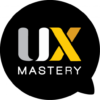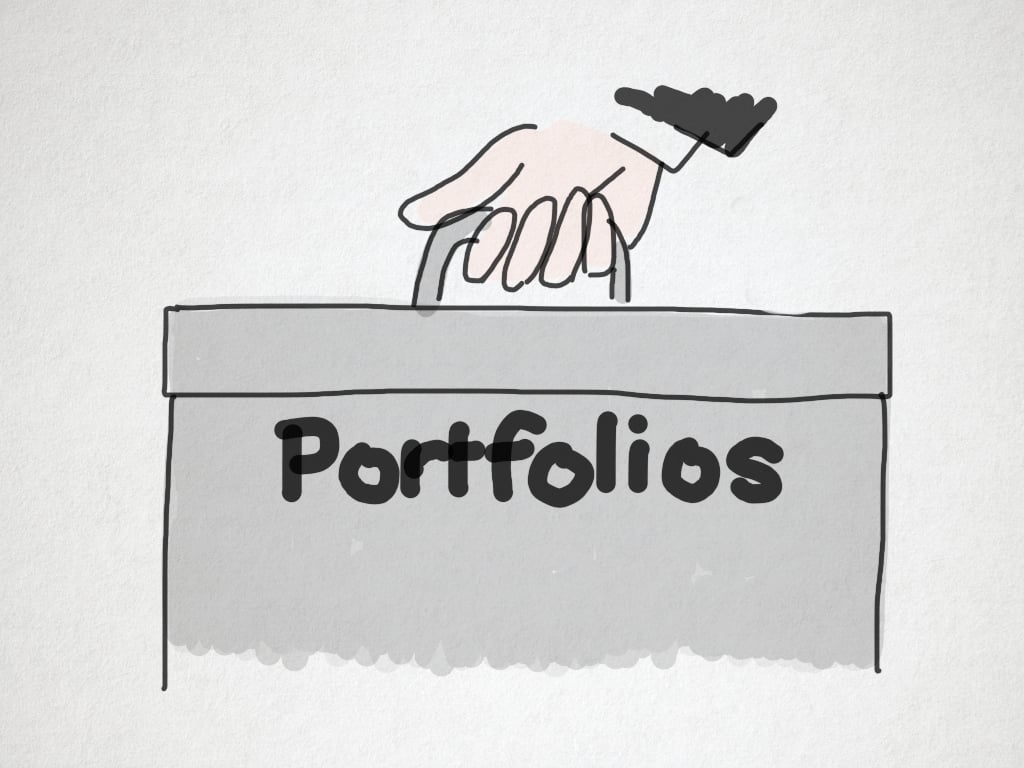Design portfolios have long been used by graphic designers and photographers to display the results of their work. But what about UX portfolios? Do UXers need them?
We work in a world of field recordings, paper scribblings and Excel spreadsheets. We design for good experiences and thus have critical input into the end results, but we don’t necessarily create the final visuals.
So what do we do when a prospective employer asks to see a portfolio?
Here are ten steps that will help build a UX portfolio that gets you through to an interview.
1. Don’t pretend to be a visual designer (if you’re not)
UX portfolios should be documents expressing the story you want to tell, project research insights and your design problem-solving abilities. Having competent visual communication skills will certainly give you additional credibility, but don’t confuse this with your “design-behind-the-visuals” UX role.
UXers are held under a critical microscope for many ‘soft’ skills or process-related abilities— communication, collaboration, analytical thinking, active listening, persuasion, planning—however, these skills don’t necessarily speak for themselves in the final results. If you focus primarily on visual design it will be difficult to convince people of these other skills, so don’t misrepresent yourself.
2. Find your inner T-shaped renaissance professional
The ‘T-shaped professional’ concept implies that there are certain skills you must have some understanding of to call yourself a UXer (the crossbar), and other skills that you can specialise in and have a deeper understanding about (the stem). You should aim to use your generalist skills to learn on the job and develop additional deep skills.
To do this in your portfolio, pay attention to:
- Showing your level of experience; this is more about the types of projects you’ve worked on and your roles within these projects, and less about the number of years or projects you’ve worked;
- Illustrating the particular skills you’ll be bringing to a project, especially your abilities to derive insights from research and conduct successful problem solving;
- Representing the quality of your UX work—the experiences you’ve fostered in users, innovations you’ve made, the mature design restraint you’ve shown in implementing proven interactions rather than the latest fads; and
- Depicting your work style and personality, i.e. your typical design process and artefacts from this and other techniques you draw on, showing details about exactly what that looks like.
3. Speak to the locals in their own language
Recruiters, employers, UX leads, project managers, developers and creative directors each have their own priorities and interests that will affect their selection agendas. Even the type of company will make a significant difference. As Johann Wolfgang von Goethe said:
“Everyone hears only what (s)he understands.”
Lynn Teo‘s excellent presentation ‘Portfolios Matter’ identifies what certain roles look for in a UX interview:
- UX Lead: your methods, independence, team player, work quality.
- Project Manager: process, on time, on-budget, communication skills.
- Front-end developer: prototyping skills, iterative design, agile.
- Creative director: conceptual thought, problem statement, effectiveness of solution.
Trying to communicate everything to everyone is going to be pretty difficult, so pick the most concise approach for your audience and stick to it. If your prospective employer hasn’t nailed the job requirements, you may also need to help them unpack these. The list above gives you something to work from.
4. Take a modular approach
I have a full master copy of my portfolio in Indesign, and as a printed A3 document in plastic sleeves. This makes it easy to shuffle the pages or leave some out depending on who I’m showing it to. I sometimes show my full folio once I’m asked in for a detailed interview, or when actually working with colleagues on a project.
5. Decide how you’ll handle NDA work
- Work protected by a Non Disclosure Agreement (NDA) should stay confidential, both because you’re legally obliged and because you otherwise risk your reputation. If you divulge the secrets of a previous employer the person wanting to hire you will assume you’ll betray their trust too.
- But put yourself in the shoes of your potential employer. Would you really hire someone without any evidence of their skills, process and experience? That’s an unjustifiable risk even for referred or recommended candidates.
So what should you actually show?
Troy Parke has good advice in his article The UX Portfolio: Top 10 Questions for UX, UI & Visual Designers:
Interviewers genuinely want to see your work, but understand confidentiality. Allude to your experience on NDA work with a list of project clients instead of showing the actual work. This way you get the value of having worked on a brand without betraying their confidence.
And if you’re still stuck, then consider anonymising the work by rebranding and obfuscating any identifying content.
6. Include hypothetical projects in your UX portfolio
You’re being hired for your potential, not because you’ve done great work in the past. Show your potential any way you can. You can demonstrate it by donating your time to a local not-for-profit or friend’s business, or you can simply make up case studies of what you might have done if a particular company had hired you. This allows you to gain some experience and build your portfolio, and most importantly it gives you artefacts to use when discussing your skills and process.
7. … but stay real
Honesty and a personal approach will go a long, long way to helping your prospective employer get to know you. Reveal your work style and your process, and above all, don’t lie. This also includes being specific about your role in collaborative projects. Remember: the best way to differentiate yourself from the crowd is to let your unique self shine out.
8. Show your thought process
A good way to do this is to tell the story behind the project, your process of connecting research findings with new designs, and how you surmounted the various design challenges you came across. Like your maths teacher used to say: show your thinking. For example, link your insights from contextual enquiries to patterns you’ve found during affinity diagramming, and through to design concepts that arose from your consideration of personas or mental models. The connections don’t have to be innovative, or even always correct – showing your ability to learn from mistakes is a useful bonus.
9. Use the 60 second test
Make sure that you make it to the ‘yes’ pile by giving them a concise insight to your skills and style by remembering these tips:
- The medium is the message. Use your UX skills to make sure your most essential information is communicated clearly.
- Don’t rely on text descriptions to make your points. Use annotated diagrams, screenshots and images – images used in conjunction with limited text will be more efficient than only text or only images.
- Structure your document clearly, with sections, sub-headings and captions.
- Cut out everything that isn’t your best work, and try to avoid more than one example of each technique or approach
- Include a summary or content listing at the front or back, and if your portfolio is large, consider a mini-summary or content listing at the beginning of each section.
- Consider user-testing your portfolio with friends or family to make sure your points are coming across how you intend.
10. Don’t let your UX portfolio get lonely
Of the more than 170 portfolios I’ve looked through over the past few weeks, I’d suggest that less than 1 in every 10 was even close to achieving all of the above points. By following these steps, you’ll be taken seriously, rising quickly to the top of the ‘yes’ pile, and be well on your way to being asked in for an interview. Good luck!
Further reading:

